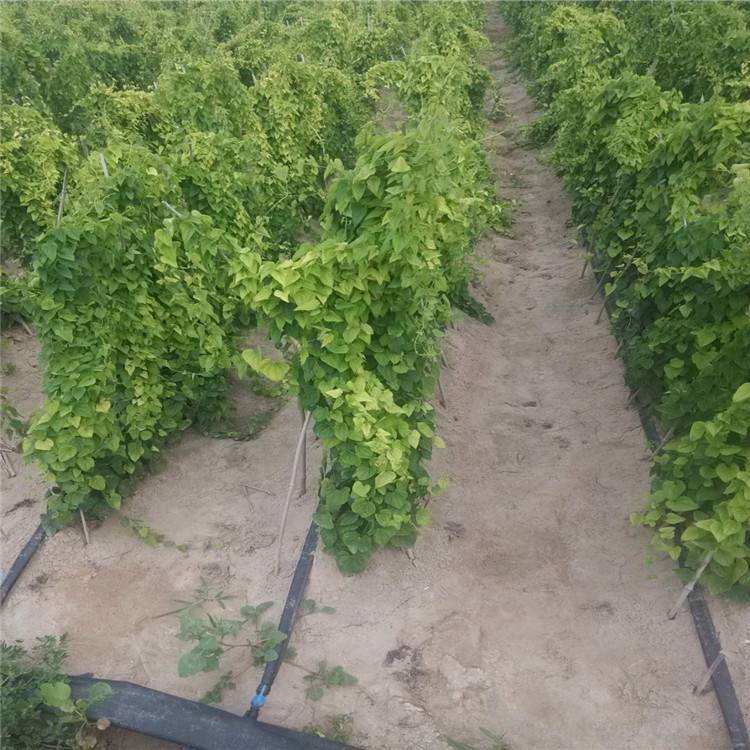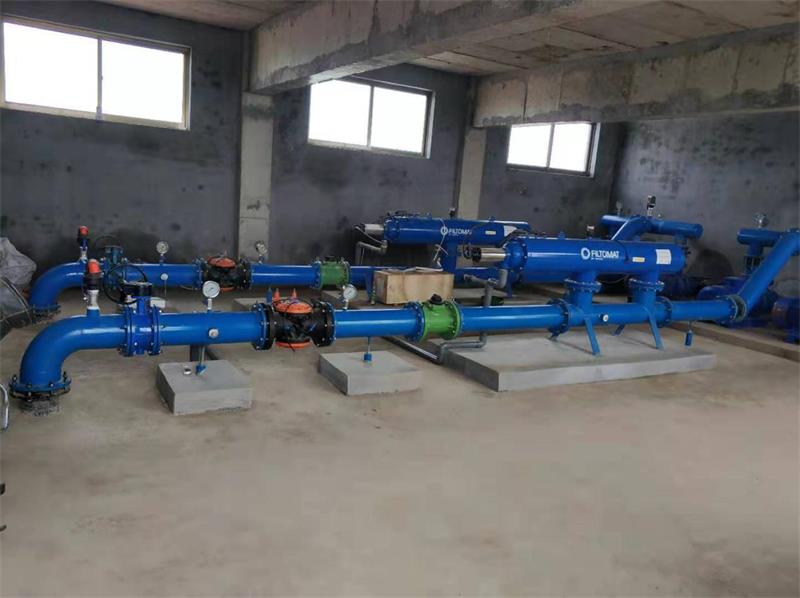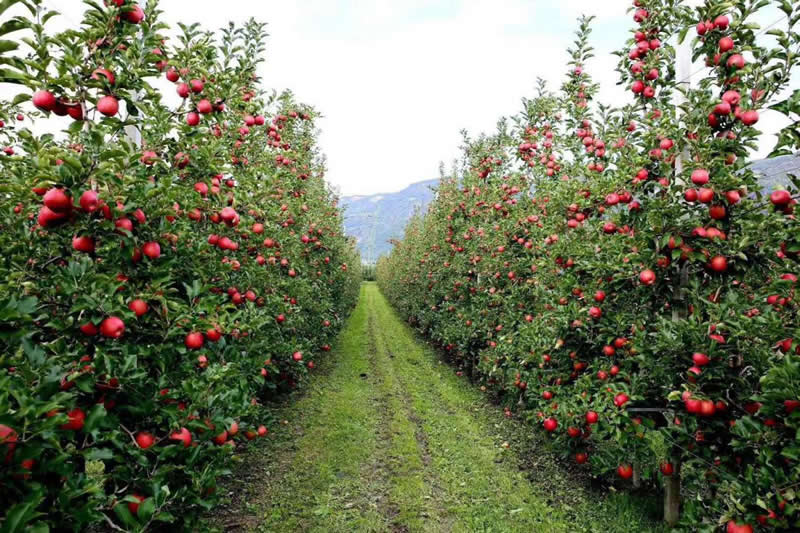1. Drip Tape:
Drip tape is available in various types, such as side labyrinth drip tape (featuring crescent or long shapes) and patch drip tape. The standard size for side labyrinth drip tape is ¢16, with another variant at ¢8 that is not within the national standard range. Wall thickness typically ranges from 0.16 to 0.24 mm, with standard emitter spacing of 200 mm and 300 mm. Patch drip tape can be manufactured with any spacing. The ¢8 drip tape features labyrinth designs like Great Wall and chain shapes, with flow rates of 2.7 L and 3.4 L respectively. The ¢16 drip tape has a flow rate of 2.2-2.4 L, with water uniformity not exceeding 5%-10%.
Application Areas:
Ideal for irrigation of crops such as sugarcane, cotton, peppers, potatoes, groundnuts, onions, vegetables, bananas, strawberries, and flowers. Suitable for both surface and subsurface irrigation.
Features of Drip Tape:
- Integrated labyrinth channels and drip holes formed by vacuum thermoforming, ensuring good adhesion and high manufacturing precision.
- Turbulent flow and multiple outlet holes, offering strong anti-clogging capabilities.
- Labyrinth channel design, ensuring uniform water distribution (up to 85%) over lengths up to 80 meters.
- Lightweight, easy to install and manage, reducing manual installation costs.
Suitable Conditions:
- Used in greenhouses and tunnels to reduce pests, save fertilizers, and improve economic benefits.
- Ideal for orchard irrigation to boost yields, improve fruit quality, and effectively control weed growth.
- Suitable for various field crops like cotton, medicinal herbs, watermelons, and vegetables, enhancing mechanized planting.
Drip tape can be conveniently laid around ridges.
2. Drip Pipe:
Drip pipes are categorized into internal labyrinth drip pipes and inter-pipe drip pipes. Available in sizes of ¢8, 12, 16, and 20, with flow rates of 2.2-2.5 L for ¢8, ¢12, ¢16, and 3-3.5 L for ¢20. Water uniformity is maintained between 5%-10%. Wall thickness varies, typically between 0.12 and 0.60 mm, with standard emitter spacing of 200 mm and 300 mm.
Application Areas:
Suitable for crops such as sugarcane, cotton, peppers, potatoes, groundnuts, onions, vegetables, bananas, strawberries, and flowers. Suitable for both surface and subsurface irrigation.
Drip Pipe Specifications:
- Available with various spacing options such as 0.3 m, 0.5 m, 1.2 m, 1.6 m, and 2.4 m.
- Different working pressures and emitter flow rates are available.
Installation usually occurs before planting, typically after applying basal fertilizers and deep plowing. After ridging, drip pipes are laid according to the width of the ridges and crop needs. Wider ridges may require two drip pipes, while narrower ridges may need just one. After laying, the pipe ends are securely fixed, and the area is covered with a plastic film, tightened and flattened, with the edges secured with soil. If irrigation is not immediately needed during the seedling stage, connection to the main water supply can be delayed.
Differences Between Drip Tape and Drip Pipe:
- Appearance:
- Drip tape is flat when not pressurized with water.
- Drip pipes are cylindrical, even when empty.
- Emitter Type:
- Drip tape generally uses flat internal emitters.
- Drip pipes use cylindrical internal emitters. Both types of emitters are designed for turbulent flow to reduce clogging.
- Application Range:
- Drip tape is widely used for crops like corn, potatoes, and cotton, typically under mulch.
- Drip pipes are more commonly used in greenhouses for vegetables, and for specialty crops like blueberries and grapes.
- Durability:
- Drip tape has a shorter lifespan.
- Drip pipes are more durable and have a longer lifespan.
- Investment:
- Drip tape requires lower investment.
- Drip pipes generally require a higher investment.
- Flow Rate:
- Drip tape emitters typically deliver around 2 L/h.
- Drip pipe emitters have a flow rate of 2.2-3 L/h.
Each system has its advantages and is chosen based on crop requirements, expected lifespan, and economic considerations. It’s essential to select the appropriate drip irrigation product that suits your specific agricultural needs.




